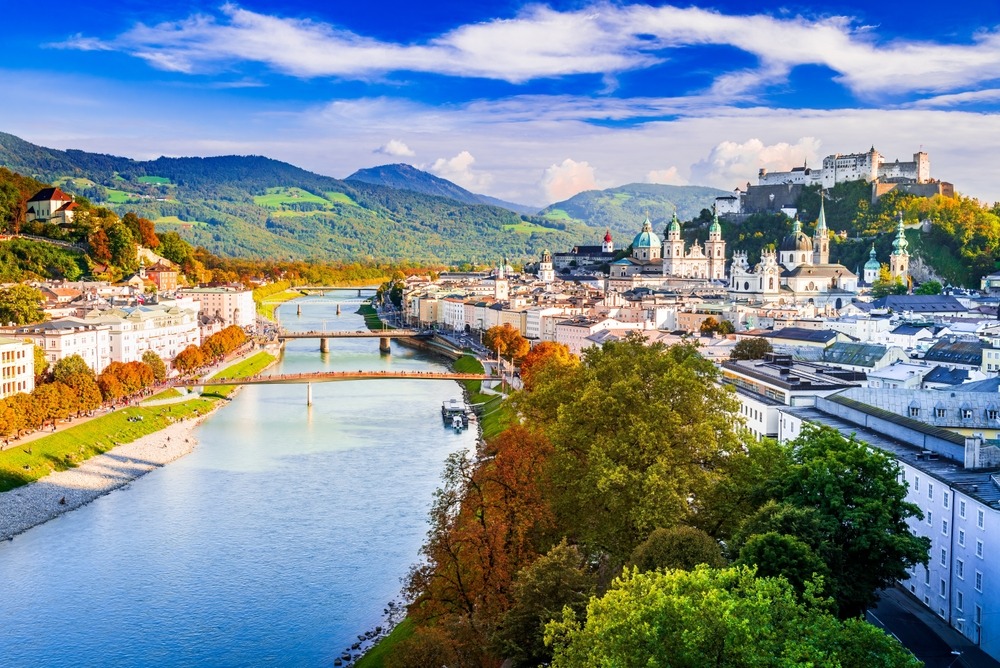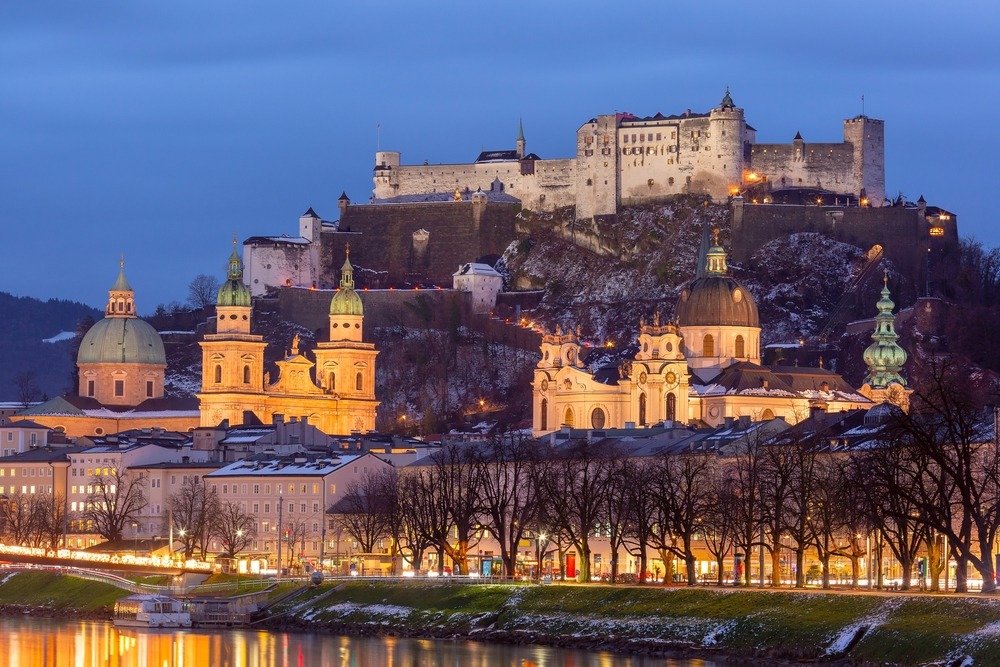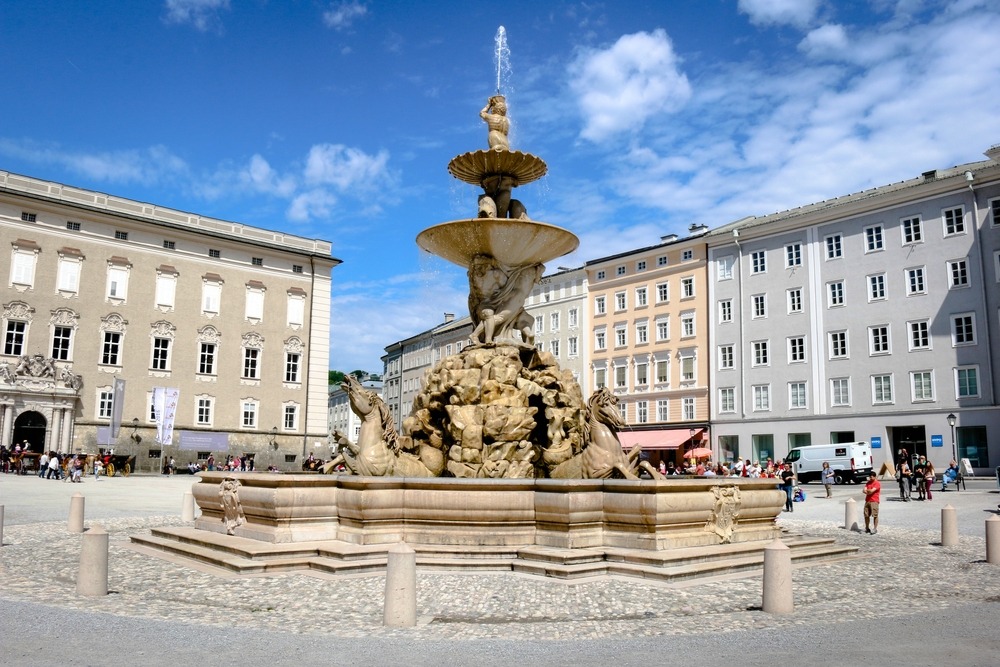Salzburg, Austria: A Timeless Jewel of the Alps

Salzburg, Austria: A Timeless Jewel of the Alps
History of Salzburg
Salzburg, located in northern Austria near the German border, is one of Europe’s most picturesque and culturally rich cities. Its name, meaning “Salt Fortress,” reflects the importance of salt mining in its early development. The city’s history spans from Roman antiquity through its peak as a baroque ecclesiastical capital and into its present-day role as a UNESCO World Heritage Site and global cultural destination.
Salzburg originated as the Roman settlement of Juvavum around 15 BC. It became a flourishing municipality under Roman rule before falling into decline with the empire’s collapse. The city re-emerged in prominence during the 7th century when Saint Rupert of Salzburg established the Abbey of St. Peter and laid the foundations for the Christianization of the region. Rupert is considered the city’s founder, and Salzburg became a religious center of growing importance.
From the 11th century onward, Salzburg was ruled by powerful prince-archbishops who held both spiritual and temporal authority. These ecclesiastical rulers transformed Salzburg into a wealthy and independent principality within the Holy Roman Empire. The city’s prosperity was fueled by the salt trade and by its strategic location along trade routes. In the 17th and 18th centuries, Salzburg experienced a golden age of culture and architecture. The prince-archbishops commissioned Italian architects to design churches, palaces, and public buildings, turning Salzburg into a jewel of baroque architecture.
Salzburg’s most famous native son, Wolfgang Amadeus Mozart, was born in 1756. The young prodigy composed many of his early works in the city. Though he later left due to tensions with the court, Salzburg proudly preserves and celebrates his legacy today.
The city lost its independence during the Napoleonic era and was incorporated into the Austrian Empire in 1816. It continued to evolve as a regional capital and developed into a modern city while preserving its historical character. During World War II, Salzburg sustained damage from bombings, but its baroque Old Town was largely spared.
In the postwar era, Salzburg’s profile grew through international tourism, especially after the release of “The Sound of Music” in 1965, which showcased many of its scenic and historic sites. Today, Salzburg is renowned for its music festivals, stunning architecture, and alpine charm, offering visitors a timeless journey into Austria’s cultural heart.

Top 25 Attractions in Salzburg, Austria
-
Hohensalzburg Fortress (Festung Hohensalzburg) – One of the largest fully preserved medieval fortresses in Europe, this imposing structure offers panoramic views and houses museums of military and medieval life.
-
Salzburg Cathedral (Dom zu Salzburg) – A baroque masterpiece built in the 17th century, this cathedral features stunning marble façades, intricate frescoes, and the font where Mozart was baptized.
-
Mozart’s Birthplace (Mozarts Geburtshaus) – Located on Getreidegasse, this museum offers insight into Mozart’s early life, family, and compositions.
-
Mozart’s Residence (Mozart-Wohnhaus) – Across the river, this second family home is now a museum with letters, instruments, and portraits of the composer.
-
Mirabell Palace and Gardens – Built in 1606, these baroque gardens with geometrically trimmed hedges and mythological statues are a Sound of Music filming site and a romantic wedding location.
-
Getreidegasse – Salzburg’s most famous shopping street, known for its wrought-iron signs, high-end boutiques, and historic buildings.
-
St. Peter’s Abbey (Stift Sankt Peter) – Founded by Saint Rupert in the 7th century, this Benedictine monastery features a baroque church, atmospheric cemetery, and catacombs carved into rock.
-
DomQuartier Salzburg – This integrated museum circuit includes the Archbishop’s Residenz, Cathedral Museum, and St. Peter’s Monastery, offering insight into Salzburg’s ecclesiastical power and art.
-
Hellbrunn Palace (Schloss Hellbrunn) – A pleasure palace known for its trick fountains, whimsical water features, and lush parkland.
-
Sound of Music Tour Sites – Fans can visit filming locations like Leopoldskron Palace, Nonnberg Abbey, and the Mirabell Gardens, among others.
-
Residenzplatz and the Residenz Fountain – A grand square flanked by baroque buildings and anchored by the magnificent Italianate fountain from 1661.
-
Salzburger Glockenspiel (Carillon Tower) – Plays classical tunes daily, including Mozart pieces, from 35 bells atop the New Residenz.
-
Museum of Modern Art (Museum der Moderne) – Located atop Mönchsberg, this museum features contemporary art and spectacular views over the city.
-
Mönchsberg Lift and Walk – A modern elevator brings visitors to Mönchsberg’s plateau, which offers trails, fortress access, and dramatic scenery.
-
Nonnberg Abbey – The oldest continuously existing nunnery in the German-speaking world, famous both historically and from The Sound of Music.
-
Salzburg Festival Theaters (Festspielhäuser) – Hosts the world-renowned Salzburg Festival of opera, drama, and classical music every summer.
-
Haus der Natur (Museum of Nature) – A massive interactive science and natural history museum for all ages.
-
Stiegl-Brauwelt – A museum dedicated to Salzburg’s most famous beer, including tastings and brewery tours.
-
Augustiner Bräustübl Mülln – A historic beer hall and monastery brewery with massive steins and hearty local fare.
-
Kapuzinerberg – A quiet hill with hiking trails, views, and a 17th-century Capuchin monastery overlooking the old town.
-
Toy Museum (Spielzeugmuseum) – A delightful museum featuring toys from the 19th century to today, perfect for families.
-
Salzburg Marionette Theatre – A unique performing arts venue where intricately carved marionettes bring Mozart’s operas and fairy tales to life.
-
Leopoldskron Palace – A rococo palace and lakefront setting used in The Sound of Music and now home to the Salzburg Global Seminar.
-
Untersberg Mountain – Just south of Salzburg, this towering peak offers cable car access and sweeping alpine views. Legend claims Charlemagne sleeps inside it.
-
Panorama Museum – Houses a 26-meter panoramic painting of Salzburg from the 19th century, capturing the city before modern development.

Salzburg is a city where art, history, and nature converge in perfect harmony. From the towering spires of its cathedrals and the romantic baroque palaces to the melodies of Mozart and echoes of Hollywood musicals, Salzburg wears its heritage with pride and grace. Visitors are not only treated to architectural and musical marvels but also to the timeless charm of an alpine town that remains forever in tune with its storied past.

































